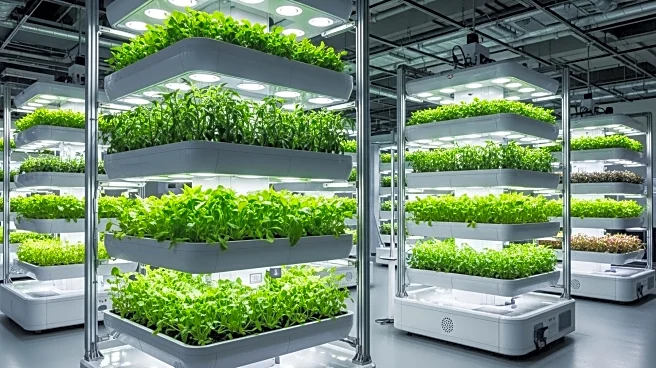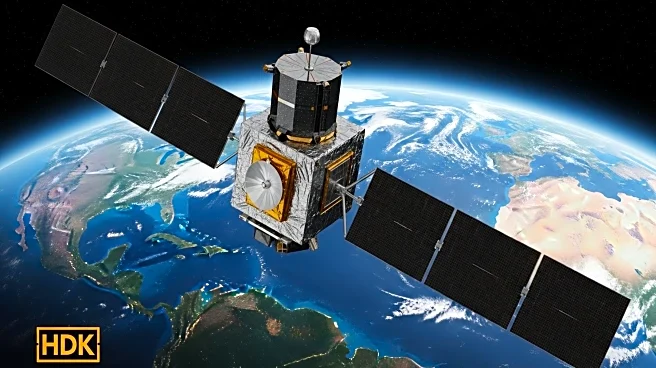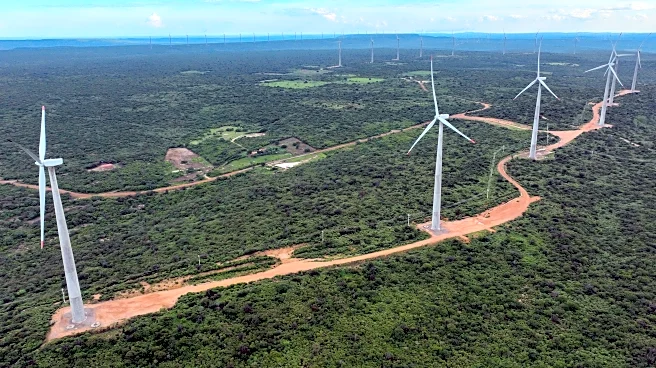What's Happening?
The Food and Agriculture Organization of the United Nations (FAO) is actively investing in vertical farming as a solution to urban food insecurity. With approximately 1.7 billion people in urban and peri-urban areas facing food insecurity, the FAO is focusing on reshaping food systems to ensure access to healthy and affordable food. Vertical farming, which involves growing crops in stacked layers indoors, is being promoted for its ability to conserve land and water while addressing food shortages. Experts from the FAO, including Guido Santini and João Intini, highlight the importance of integrating technological innovations with social governance models to enhance productivity and improve food distribution. The FAO is also encouraging the use of public spaces for urban agriculture to strengthen food security for vulnerable families.
Why It's Important?
The initiative by the FAO to promote vertical farming is significant as it addresses the growing challenge of food insecurity in urban areas, which is exacerbated by rapid urbanization, socioeconomic instability, and climate change. By focusing on innovative agricultural practices, the FAO aims to create resilient food systems that can withstand these pressures. Vertical farming offers a sustainable solution by optimizing space and resources, making it particularly valuable in densely populated cities. This approach not only helps in reducing food waste but also empowers local communities by providing them with the means to produce fresh and nutritious food. The success of such initiatives could lead to improved public health outcomes and economic stability in urban areas.
What's Next?
The FAO plans to continue supporting urban agriculture initiatives by promoting policies that prioritize food security. Local governments are encouraged to integrate urban agriculture into their public policies, as seen in successful examples from Bolivia, Brazil, and Colombia. These programs connect community production to school meals and local markets, enhancing food access. The FAO will also focus on overcoming barriers to scaling vertical farming, such as the need for adequate infrastructure and financial resources. By fostering partnerships and leveraging digital technologies, the FAO aims to expand the reach and impact of vertical farming in urban settings.
Beyond the Headlines
Vertical farming not only addresses immediate food security concerns but also contributes to broader environmental and social goals. By reducing the need for extensive agricultural land, it helps in conserving natural habitats and biodiversity. Additionally, the integration of urban agriculture into city planning can lead to greener urban environments, improving air quality and reducing urban heat. Socially, these initiatives can strengthen community ties and promote cooperative efforts, fostering a sense of ownership and empowerment among residents.












